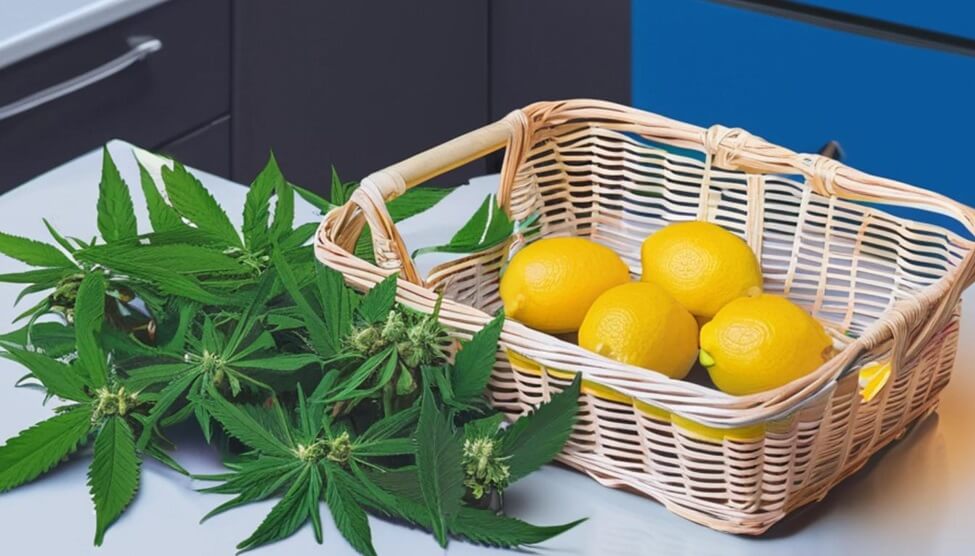Understanding the Cannabis High
As more people experiment with cannabis, experiencing a high that feels overwhelming or unpleasant is not uncommon. Sobering up takes time and one should avoid engaging in activities such as driving or operating machinery while THC is active in the bloodstream. Plan ahead and consume responsibly. What these techniques may do is ease the intensity of the high as you experience it. Knowing how to manage and mitigate the effects of THC can help you feel more comfortable and in control. Whether it’s navigating the aftermath of a cannabis-laden adventure or seeking relief from an unintended detour into the too-high territory, knowing how to come down effectively and safely is invaluable. The significance of this knowledge not only speaks to personal well-being but also to the ability to enjoy cannabis responsibly, rendering it a crucial aspect of the cannabis experience. Please note, this is not legal or medical advice. Always consult a healthcare professional for medical concerns.
Before diving into techniques for coming down, it’s helpful to understand what a cannabis high is. The primary psychoactive compound in cannabis is tetrahydrocannabinol (THC). When THC binds to receptors in the brain, it produces various effects, including euphoria, altered senses, and relaxation. However, too much THC can lead to intense feelings, paranoia, and other uncomfortable sensations.
Recognizing the Symptoms of Being Too High
Dry Mouth: Often referred to as “cotton mouth,” individuals may experience severe dryness in the mouth.
Nausea and Changes in Appetite: This can range from a slight discomfort to intense nausea, leading to vomiting.
Dizziness and Headaches: These symptoms can cause significant discomfort and disorientation.
Red, Dry Eyes: A common symptom that is easily noticeable.
Increased Heart Rate and Blood Pressure: These symptoms can be particularly alarming as they might pose additional health risks.
Fatigue or Lethargy: A state of overwhelming tiredness or a lack of energy often follows.
Psychological symptoms
Intense feelings and Paranoia: Feelings of unease can escalate to severe paranoia.
Confusion and Difficulty Concentrating: Tasks that require focus can become increasingly difficult.
Mood Changes and Irritability: Rapid shifts in mood are common, affecting emotional stability.
Hallucinations and Delusions: In more severe cases, individuals might experience visual or auditory hallucinations.
Memory Lapses and Disorganized Thought: Short-term memory can be affected, making it hard to recall recent events or follow conversations.
Variability of symptoms based on individual and consumption method
Method of Consumption: Symptoms can vary significantly depending on whether cannabis is smoked, vaped, or ingested via edibles. Edibles can lead to delayed onset of symptoms, often resulting in higher consumption and more intense effects.
Individual Tolerance and Biology: Factors such as body weight, metabolism, and previous exposure to cannabis can influence how one reacts.
Potency of the Strain: The THC content plays a crucial role in the intensity of the symptoms experienced.
Environmental Factors: The setting in which cannabis is consumed can affect the psychological state, potentially exacerbating symptoms like anxiety and paranoia.
Tried-and-True Methods to Sober Up
Sobering up takes time and one should avoid engaging in activities such as driving or operating machinery while THC is active in the bloodstream. Plan ahead and consume responsibly.
Using CBD to Counteract THC’s Effects
CBD, or cannabidiol, is known for its ability to mitigate the intense effects of THC. Studies suggest that CBD can reduce feelings of unease and paranoia induced by THC by interacting with the same cannabinoid receptors in the brain but in an opposing manner. This interaction helps balance the psychoactive effects of THC, making it a valuable tool for those looking to sober up quickly. Consuming CBD oil, whether by dabbing it under the tongue or through CBD gummies, can provide relief in a matter of minutes.
Hydration and Its Benefits
Staying hydrated is crucial when trying to sober up from a cannabis high. THC can inhibit the salivary glands, leading to dry mouth. Drinking plenty of water, not only helps alleviate dry mouth but also helps dilute THC’s concentration in the bloodstream, speeding up the sobering process. Regular sips of water, herbal teas, or other non-alcoholic beverages can significantly aid in reducing discomfort and enhancing the body’s ability to manage THC’s effects.
The Role of Terpenes: Black Peppercorn and Lemon
Terpenes such as limonene and beta-caryophyllene play a significant role in counteracting the effects of THC. Black peppercorns are rich in beta-caryophyllene, which may help increase clarity of thought and reduce anxiety by binding to cannabinoid receptors in a way that counteracts THC’s effects. Similarly, lemons contain limonene, a terpene known for its stress-relieving properties. Chewing on black peppercorns or inhaling their scent, as well as sipping water infused with lemon zest, can provide immediate relief by promoting alertness and calming the mind during an intense high.
Lifestyle Adjustments to Ease the High
Engaging in Light Exercise
Go for a Short Walk: Even a brief 10 to 15-minute walk can significantly impact your high. The fresh air and movement can help clear your head and reduce the intensity of your high.
Try Some Light Movement: Activities like stretching or yoga can distract you from fixating on your high. These gentle exercises can also lower your blood pressure, relieve stress and anxiety, improve your mood, and burn off some excess energy if you’re feeling jumpy.
Deep Breathing and Meditation
Find a Quiet Place: Sit or lie back in a quiet spot where you can relax without interruptions. This setting is perfect for starting your deep breathing or meditation session.
Breathing Exercises: Techniques such as deep diaphragmatic breathing and alternate nostril breathing can activate the parasympathetic nervous system, which helps in reducing stress levels and promoting relaxation.
Listening to Music: Incorporating calming music can enhance your meditation experience, helping you to chill further and focus on your breathwork.
Taking a Shower or Bath for Relaxation
Hot Showers: The warmth from a hot shower can unclog pores and provide a relaxing experience. For some, a hot shower may also sober you up or lessen the effects of THC.
Cold Showers: If you’re looking for an instant energy boost, a cold shower might be the way to go. The shock from the cold water can wake you up, providing a refreshing change if you’re feeling too high.
Bath Time: Soaking in a warm bath can also offer relief. The heat helps in redistributing blood flow from the gut to the skin, potentially alleviating symptoms associated with high THC consumption.
By incorporating these lifestyle adjustments, individuals can find effective ways to manage and ease the intensity of a high.
Preventive Measures to Avoid Getting Too High
Understanding Your Tolerance Levels
To prevent getting too high, it’s crucial to understand your personal tolerance levels. Tolerance refers to how accustomed your body is to cannabis, which can diminish the effects over time, requiring higher doses to achieve the same results. This can be particularly problematic for medical users who rely on consistent effects. To manage tolerance, consider using cannabis less frequently or opting for a tolerance break, allowing CB1 receptors in the brain to recover and reducing the need for increasing doses.
The Importance of Dosing Correctly, Especially with Edibles
Correct dosing is vital, especially when consuming edibles, as they can lead to a delayed onset of effects. This delay often causes users to consume more than intended before the initial dose takes effect, increasing the risk of overconsumption. Start with a low dose, such as 2.5 mg of THC, and wait at least two hours to assess its impact before considering additional consumption. This approach helps mitigate the risk of an unexpectedly intense high and potential negative side effects.
Choosing the Right Setting for Consumption
The environment in which you consume cannabis can significantly influence your experience. Using cannabis in a comfortable, safe setting can prevent the anxiety and paranoia that sometimes accompany high doses. Avoid consuming cannabis in unfamiliar or stressful settings, which can exacerbate negative effects. Instead, choose a relaxed environment where you feel secure and at ease, enhancing the overall experience and helping to maintain a manageable level of intoxication.
Afterthoughts
Through exploring the multifaceted journey of easing the intensity from a high, this article has illuminated a variety of effective techniques and lifestyle adjustments that ensure a safer and more enjoyable cannabis experience. The insights provided aim not only to educate but to empower readers with practical knowledge that enhances personal well-being and responsibility in cannabis use.
Disclaimer: the information provided in this document is for informational purposes only and is not intended as a substitute for professional medical advice, diagnosis, or treatment.

Our Top Brands

5G Pops Product Spotlight







